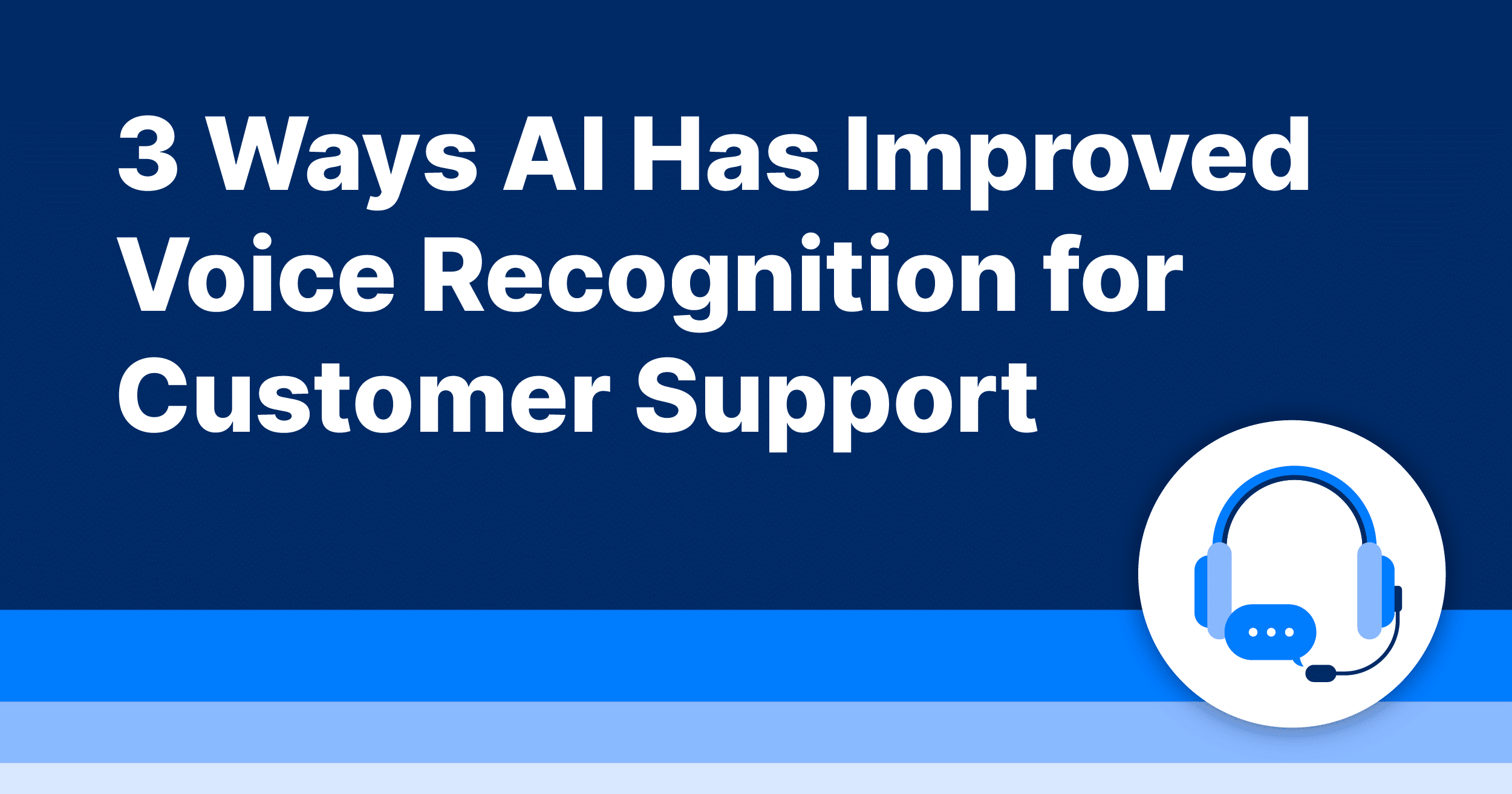In the realm of customer support, efficiency and accuracy are paramount. As technology advances, voice recognition has become a critical component in enhancing these aspects of support, especially since 75% of all customer service requests still come through voice. The integration of artificial intelligence (AI) has brought significant improvements in voice recognition, making it easier for businesses to provide efficient, accurate support.
In this blog, we’ll explore three key ways AI has elevated voice recognition technology: through end-to-end deep neural network (DNN) architecture, natural language understanding (NLU), and support for a wide array of languages, dialects, and accents.
1. End-to-End Deep Neural Network (DNN) Architecture
What is End-to-End DNN Architecture?
Traditional voice recognition systems relied on several individually optimized models, each responsible for different stages of processing, such as feature extraction, acoustic modeling, and language modeling. The introduction of end-to-end DNN architecture simplifies this by using a single, unified model that processes raw audio input directly to the desired text output.
Improvements in Accuracy and Efficiency
End-to-end DNN architecture has significantly improved the accuracy of voice recognition systems. By leveraging this unified model, the system can directly learn the intricate relationships between spoken words and their corresponding text, reducing the error rate. This approach minimizes the need for manual feature extraction and fine-tuning, resulting in faster processing times and more accurate transcriptions.
For customer support, this means quicker and more precise responses to customer queries. Agents can rely on the system to accurately capture and transcribe customer utterances, ensuring that they address the correct concerns without misinterpretations. This leads to a more efficient support process and higher levels of customer satisfaction.
Scalability and Adaptability
The end-to-end DNN architecture is highly scalable and adaptable, allowing it to handle various types of input data and environments. The model can be trained on diverse datasets to improve its performance in specific customer support scenarios, making it a versatile solution for businesses of all sizes.
2. Natural Language Understanding (NLU)
What is Natural Language Understanding?
Natural language understanding (NLU) is a subfield of natural language processing (NLP) that focuses on helping machines understand and interpret human language in a meaningful way. NLU goes beyond simple keyword matching by comprehending the context, intent, and sentiment behind spoken words.
Enhancing Contextual Understanding
One of the key advancements in AI-driven voice recognition is the ability to understand the context of customer interactions. NLU enables systems to grasp the intent behind customer queries, even if they are phrased in different ways. This contextual understanding is crucial for providing accurate and relevant responses.
For example, if a customer says, “I need help with my order,” the system can identify the intent as seeking assistance with an existing purchase. By understanding the context, the voice recognition system can route the query to the appropriate support agent or provide automated responses, streamlining the support process.
Reducing Customer Frustration
Misinterpretations and irrelevant responses are significant sources of customer frustration. NLU reduces these issues by ensuring that the system accurately identifies and addresses the customer’s needs. This leads to a more seamless and satisfying customer experience.
Enabling Advanced Features
NLU also enables advanced features such as sentiment analysis, which can detect the emotional tone of a customer’s speech. This information can be invaluable for support agents, allowing them to tailor their responses to better address the customer’s emotional state, whether it’s frustration, confusion, or satisfaction.


Increase agent efficiency with AI
3. Language and Accent Support
Global Reach and Inclusivity
The global nature of modern business requires support for a diverse customer base. AI advancements in voice recognition have made it possible for systems to recognize and interpret a wide array of languages, dialects, and accents. This inclusivity ensures that businesses can provide efficient and accurate support to customers worldwide.
Training on Diverse Datasets
AI-driven voice recognition systems are trained on extensive datasets that include various languages, regional dialects, and accents. This training allows the systems to accurately recognize and process speech from individuals with different linguistic backgrounds. As a result, customers can interact with support systems in their native languages, making the experience more comfortable and efficient.
Reducing Errors and Miscommunication
One of the challenges with voice recognition is accurately capturing speech from individuals with different accents or speaking styles. AI advancements have significantly reduced errors and miscommunication by improving the system’s ability to understand diverse speech patterns. This ensures that customers receive accurate responses regardless of their accent or dialect.
Enhancing Multilingual Support
Multilingual support is a significant advantage for businesses aiming to cater to a global audience. AI-powered voice recognition systems can seamlessly switch between languages during interactions, providing a smooth and coherent experience for multilingual customers. This capability is particularly beneficial for international businesses with a diverse customer base.
Conclusion
AI has brought about remarkable advancements in voice recognition technology, greatly enhancing its efficiency and accuracy in customer support. Through end-to-end DNN architecture, AI has improved the precision and speed of voice recognition systems. NLU has enabled these systems to grasp the context and intent behind customer queries, reducing frustration and improving the overall experience. Additionally, AI’s ability to support a wide array of languages, dialects, and accents has made voice recognition more inclusive and effective on a global scale.
As businesses continue to prioritize efficient and accurate customer support, leveraging AI-driven voice recognition will be crucial. By embracing these advancements, companies can provide superior service, streamline support processes, and ultimately achieve higher levels of customer satisfaction.
In this ever-evolving technological landscape, AI-powered voice recognition stands out as a key enabler of enhanced customer support, paving the way for a future where interactions are seamless, efficient, and deeply satisfying.













































